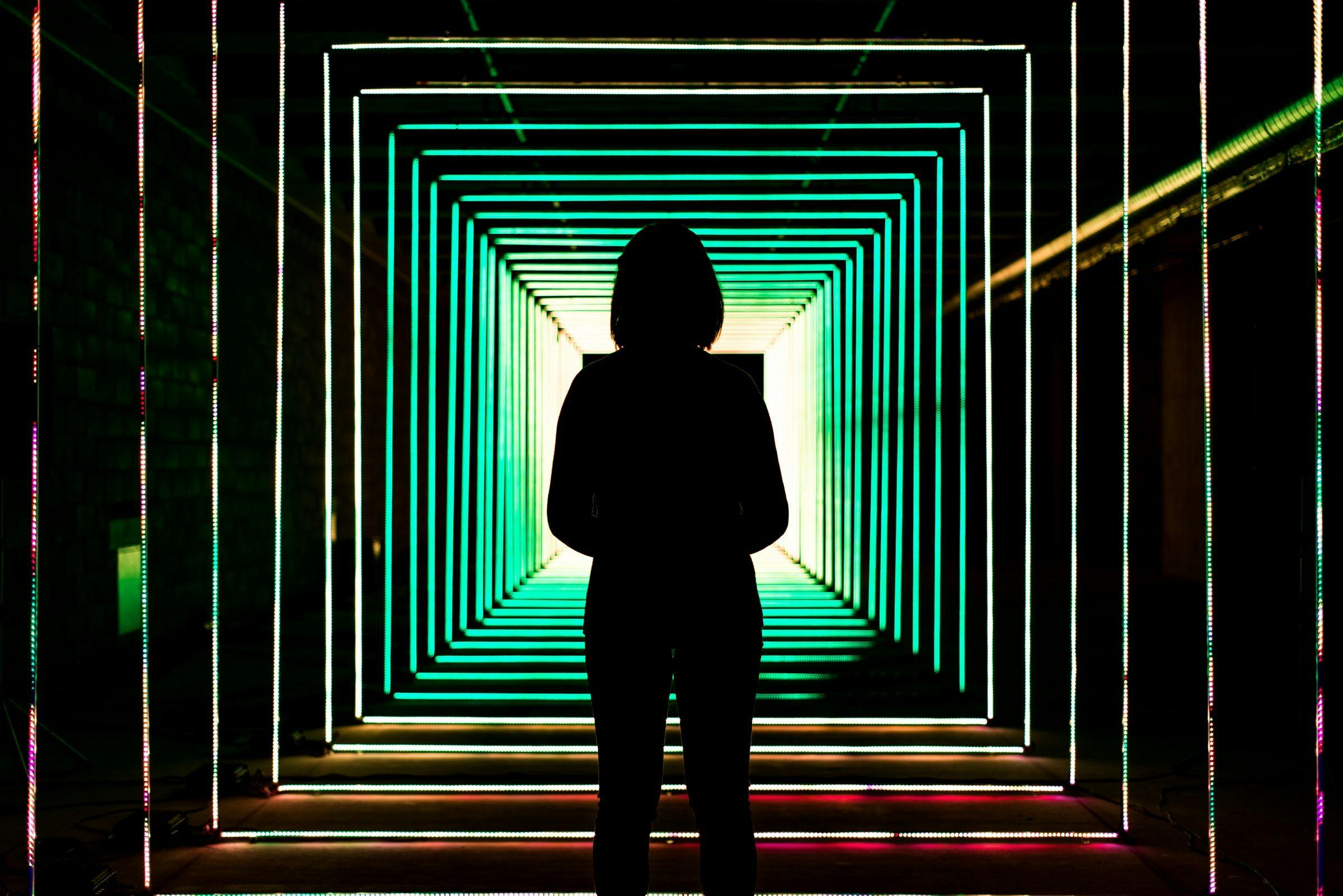Taste is the New Battleground of Cultural Influence
CONSUMER INSIGHTS
What does it mean to have taste in the age of AI? In a world overwhelmed by algorithms and aesthetic overload, taste is no longer just about style—it’s a cultural operating system. Taste is evolving into a strategic skill, shaping everything from design and fashion to tech and identity.

The Big Picture is a hub on our platform for understanding the huge macrotrends shaping our society. This is the Big Picture on taste based on our "Taste: The New Battleground of Cultural Influence" trend report.
In a world shaped by algorithmic abundance and hyper-curation, taste is re-emerging—not as a matter of preference, but as a defining force of identity and cultural direction. Taste is not a passive preference but as an active cultural force—complex, hybrid, and deeply human.
At Nextatlas, we’re seeing clear signals: the future of taste is not just about style or consumption, but about discernment, authenticity, and a deeper alignment between instinct and innovation.
Taste as a Cultural Operating System
At its core, taste is an interpretive act. It’s how we make sense of sensory overload—how we choose what resonates amidst the noise. Increasingly, it’s also where the friction between human intuition and machine intelligence comes to the surface.
AI is challenging traditional aesthetic boundaries, opening new creative territories. But even as it expands what’s possible, it reinforces the value of human discernment—our ability to recognize texture, subtext, and the intangible signals that define cultural relevance.
Historically, taste has been linked to education, class, and access. Today, it’s morphing into something more fluid and democratized—but also more nuanced. It’s not what you like. It’s why you like it, how you choose it, and how you bring coherence to an increasingly fragmented cultural landscape.
In our data, we observe a shift from aesthetic maximalism to intentional minimalism. From algorithmic convenience to emotional depth. Consumers are moving away from polished perfection toward raw, sensory-rich experiences that feel unfiltered and real.

A screenshot from our "Taste" webinar with Joe Burns of Quality Meats Creative in March 2025
Instinct vs. Algorithm
The age of AI isn’t eliminating human taste—it’s stretching it. Generative tools are blurring the lines between creator and consumer, but at the core, human instinct remains the curator. What resonates now are those visceral, personal choices that escape prediction models.
While AI can simulate style, it still can’t replicate meaning—and this is where human taste steps in. The cultural leaders of tomorrow won’t be those who chase trends, but those who know how to sift signal from noise and craft narratives that feel intentional.
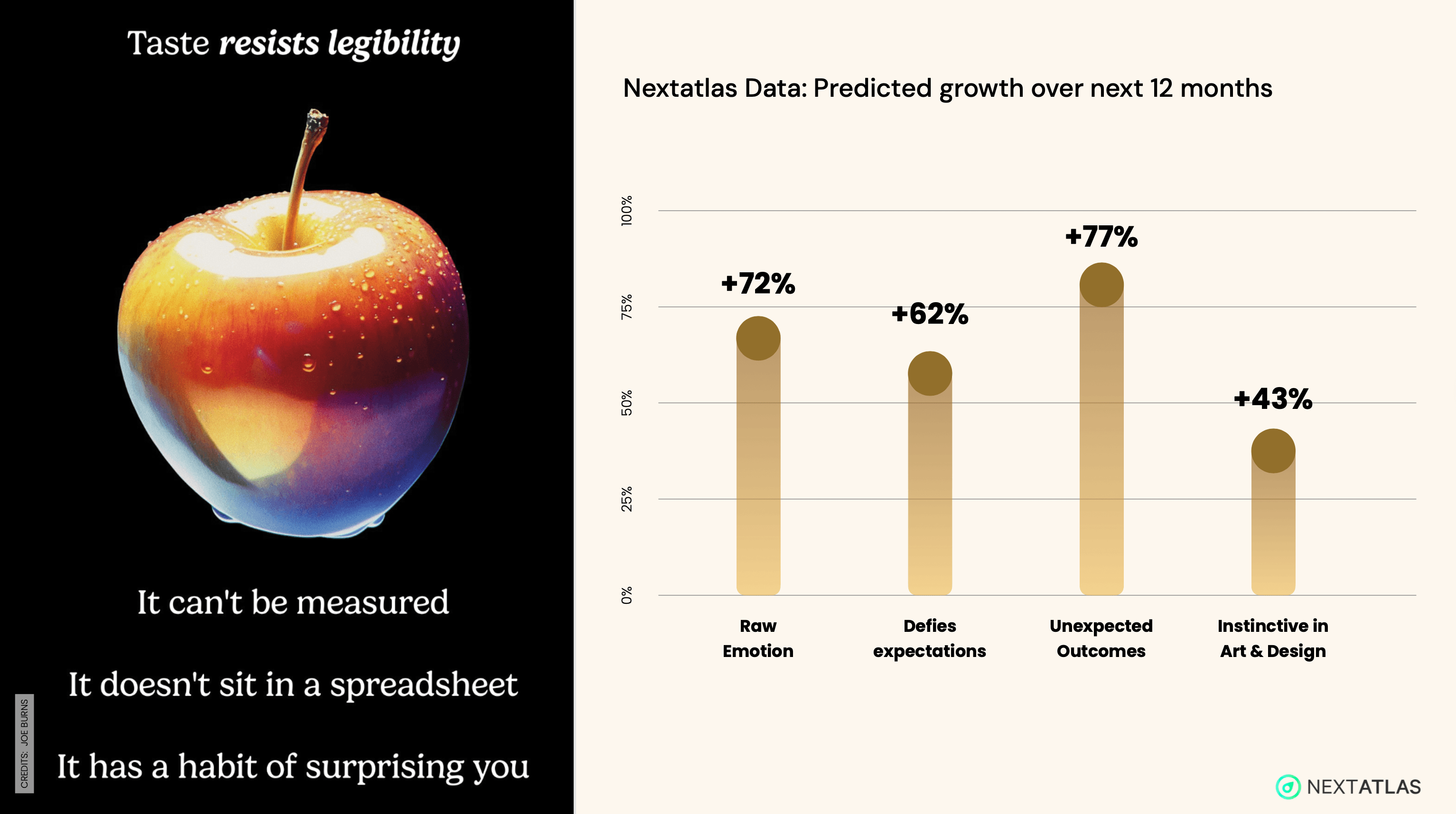
Top concepts from the "Uncodable Aesthetics" trend in our "Taste" report
A New Language of Desirability
We’re witnessing a fusion of disciplines: food, fashion, beauty, and even tech are collapsing into a multi-sensory language of influence. Taste is no longer confined to what we see or wear—it’s how we experience the world holistically, and how we express values through that experience.
We’re seeing the rise of cross-sensory influence, where aesthetic codes bleed across industries, creating new symbols of desirability. From the buttery softness of a leather bag evoking the feel of pastry to the palette of a skincare line inspired by vintage film tones, taste is becoming a shared, symbolic language.
The new tastemakers operate at this intersection—combining visual fluency with material knowledge, digital literacy with emotional intelligence.
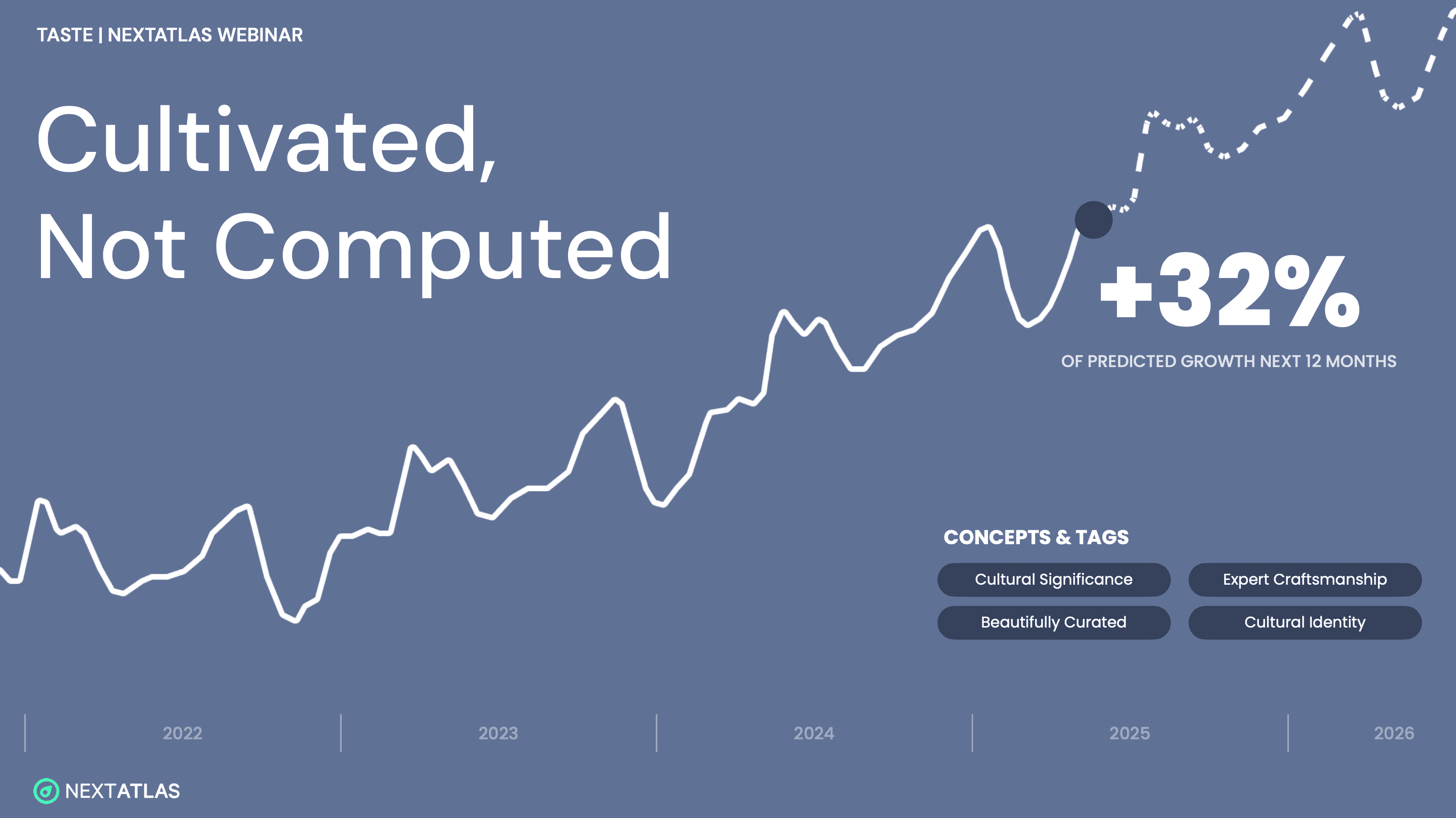
Timeline of predicted growth of the "Cultivated, Not Computed" trend in our "Taste" report
Curation as Creation
In this landscape, the tastemaker isn’t the one with the loudest following, but the one with the sharpest eye—those who can spot the signal in the noise, who understand the cyclical nature of influence but know when to break from it.
As archival references gain new relevance and intentionality becomes a design principle, taste is shifting away from trend-chasing and toward a more editorial sensibility—one that values longevity, craftsmanship, and emotional intelligence.
In an ecosystem of infinite options, the act of choosing becomes creative. We’re seeing a growing reverence for craft, for archive, for provenance—not as nostalgia, but as a way to anchor taste in meaning.
Signals show a move from the new-for-new’s-sake mentality to a model where innovation is filtered through cultural continuity. In other words: less hype, more substance.

Top concepts from the "Curation as Creation" trend in our "Taste" report
Tastemaking in the Future
Taste isn’t static—it’s a feedback loop between culture, technology, and emotion. Taste is not neutral. It shapes what is seen, what is valued, and what is remembered. In a landscape mediated by tech, those who can combine intuition and insight, culture and code, will define the next chapter.
At Nextatlas, we believe taste is becoming a strategic skill—a compass for navigating the complexity of modern desires. And in a world of algorithmic sameness, it’s the bold, the intentional, and the discerning who will lead.
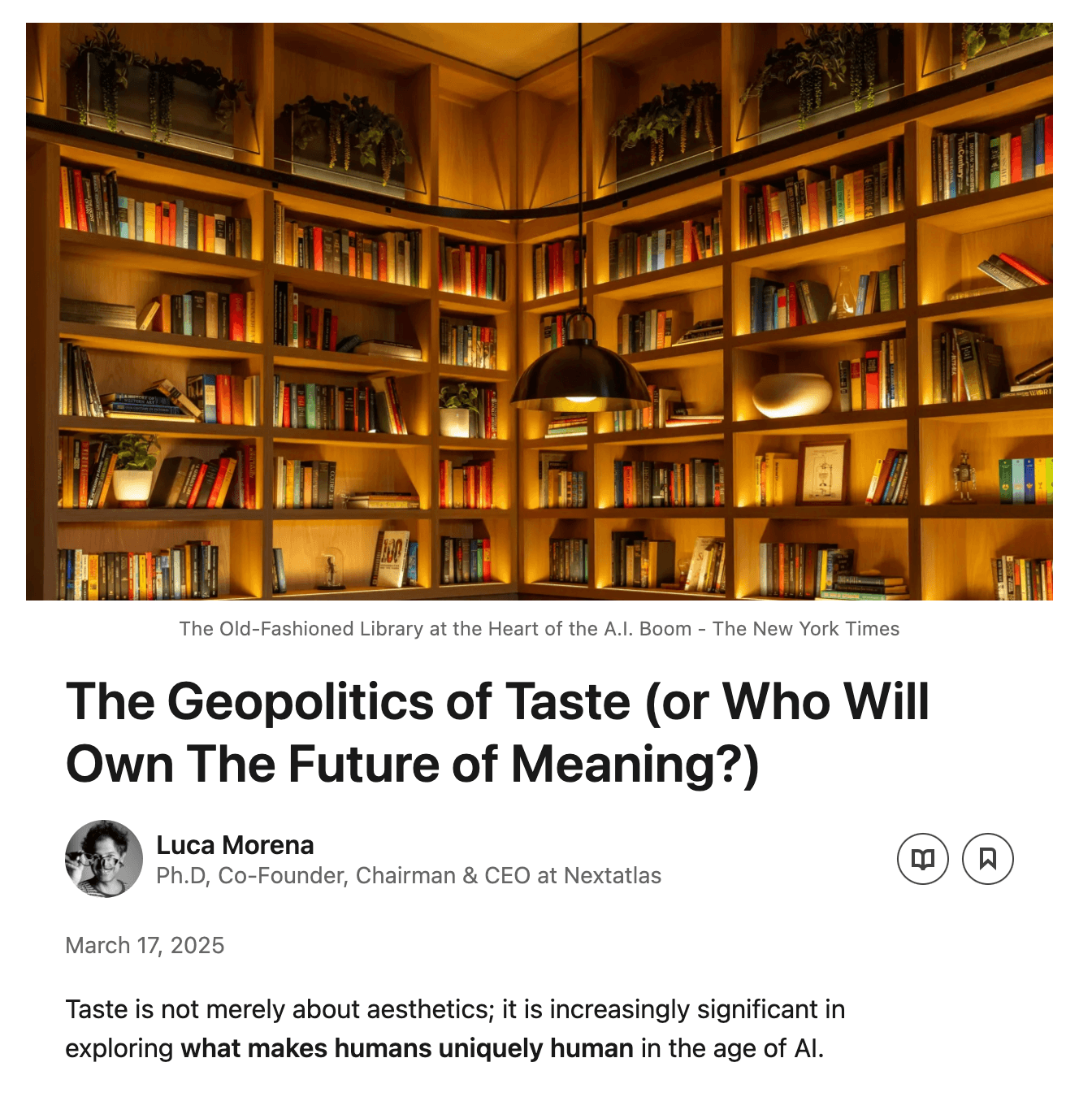
Read more in this LinkedIn article by our CEO, Luca, for his take on taste in the AI age
Trend lines, data, and information described in this article emerge from the ongoing analysis performed by Nextatlas on its global observation pool made of innovators, early adopters, industry insiders expressing their views on Twitter, Instagram, and Reddit.
To learn more about our AI, discover Nextatlas Methodology here
Related articles:
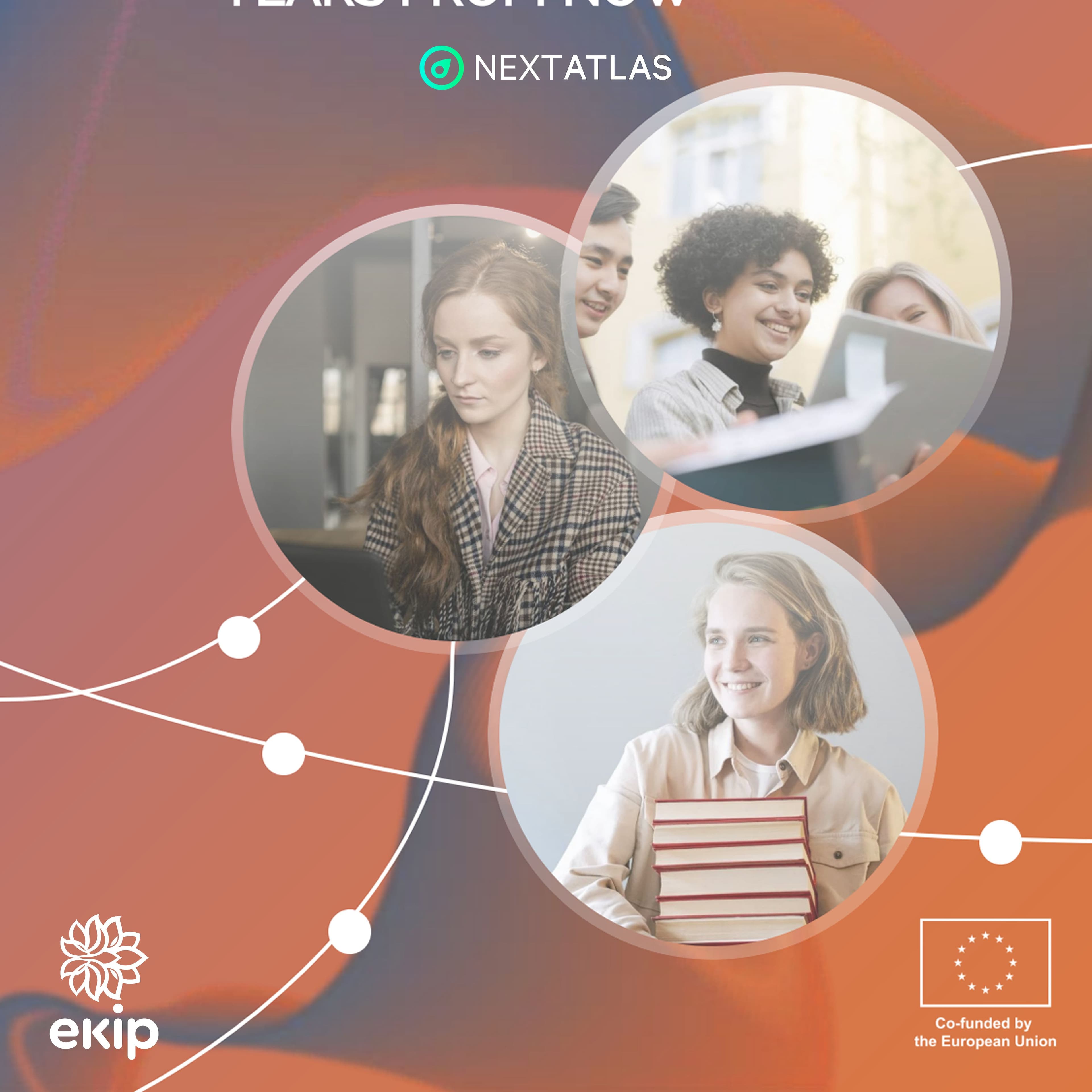
NEXTATLAS x EKIP
Tomorrow’s Creative Careers: How Backcasting Helps CCIs Navigate What’s Next

DESIGN & INTERIORS
Sheer Beauty: Ethereal Materials and Fluid Forms Meet Contemporary Living
Italy
Torino - Via Stampatori 4, 10122(Operational headquarter)+39 011/0864065VAT number and registration number at the Registro delle Imprese di Cagliari: 03428550929 paid share capital € 167.740,00 — © 2024 iCoolhunt SpA.

